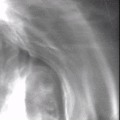From remote sensing to studies of the microscopic world and covert detection, engineers rely on methods of harnessing light for a variety of research applications and industries.
Over the last two years, capturing and manipulating light for the creation of innovative new optical devices isn’t the only thing that a team at the Harvard John A. Paulson School of Engineering Applied Sciences (SEAS) has been working to do: they have also been looking at ways they can control darkness.
Now, a team led by Federico Capasso, Robert L. Wallace Professor of Applied Physics and Vinton Hayes Senior Research Fellow in Electrical Engineering at SEAS, says they have succeeded in developing a method of controlling points of darkness, otherwise known as optical singularities, with the help of metasurfaces.
Controlling Darkness With Metasurfaces
Metasurfaces are exceptionally thin artificial materials consisting of films made from specific elements, which are engineered to function beyond the limitations of metamaterials, their synthetic composite cousins.
Optical singularities appear throughout light fields, although they are most evident in coherent light sources, including the very focused beams produced by lasers. They are intriguing to researchers because they possess distinctive mathematical properties exclusive to the darker regions of light fields, which possess no equivalent in brighter areas these fields produce.
Capasso and the team say that working with optical singularities has presented challenges in the past since manipulating them is no simple task on account of their intricate structures. However, overcoming these issues is worthwhile because of their technological applications, which is precisely what Capasso and his colleagues have succeeded in doing.
This was made possible in part thanks to the use of metasurfaces, which Capasso’s lab introduced in 2011 and began using half a decade later to help construct high-performance lenses made using advanced semiconductor printing techniques called metalenses, which led to the discovery of new ways very lightweight instruments could be used to focus light.
Capasso was the senior corresponding author of a pair of new papers describing the team’s research, which appeared in Science Advances and Nature Communications.
Optical Singularities Pose Unique Challenges
Soon Wei Daniel Lim, co-first author of the paper in Nature Communications, told The Debrief that the unique challenges optical singularities present make metamaterials ideal tools for working with them.
“Optical singularities are tricky to work with because many applications are less tolerant to imperfections and distortions in dark regions as compared to lighted regions,” Lim said in an email to The Debrief.
As an example, Lim says that one might not pay very much attention to minor variations in the brightness of a realistic-looking hologram of a person.
However, similar intensity fluctuations present in the hologram’s darker regions “would greatly restrict its usefulness,” Lim said.
“Particles may be able to escape dark optical traps due to these fluctuations,” he said, adding that “dark spots and features can be substantially smaller than bright features, which makes precise wavefront control and alignment very important.”
In short, working with the darker areas within electromagnetic fields that represent optical singularities has proven to be complicated in the past, which is why Lim, Capasso, and the team say that metamaterials are optimal for working with them.
“These properties and constraints make metasurfaces a useful platform for creating and working with such optical singularities since metasurfaces offer precise and flexible control over optical wavefronts and wave behavior.”
“We aim to bridge metasurface capabilities with the wave physics of singularities using algorithms and simple design principles,” Lim explained.
In their recent research, the team used a special optical device that incorporated metasurfaces made from nanopillars of titanium dioxide, allowing Lim and his fellow researchers to manipulate light so that several optical singularities were produced.
Relying on a computer algorithm to help control the appearance of these points of darkness, Lim said this allowed him to instruct the computer to calculate the required shape and diameter the nanopillars should be, effectively reverse engineering the metasurface’s design.
The resulting array of dark areas produced as light travels through the metasurface has several potential applications, including creating “optical traps” that can be used to catch individual atoms.
A New Variety of Optical Singularities
Another result of the recent studies, as outlined in the paper the team published in Science Advances, involves the first recognition of an entirely new class of optical singularities, which they characterize as polarization singularities.
First author Christina Spaegele said the team has succeeded in creating optical singularities “that can withstand a wide range of perturbations,” and although building on past research where some polarization singularities were already produced, Spaegele says the robustness of those her team has observed “opens the way to optical devices with high reliability and durability in various applications.”
“By shining light through a specially-designed metasurface and focusing lens, we can produce an unwavering polarization singularity surrounded entirely by points of light – essentially creating a dark spot inside a sphere of brightness,” Spaegele said in a statement.
The team says that these new methods of controlling points of darkness with metasurfaces have a number of potentially useful applications.
“Optical devices are generally made of bulk components like lenses and waveplates which individually have well-defined optical tasks,” Lim told The Debrief. “Metasurfaces allow multiple functions and behavior to be encoded on a smaller number of flat surfaces, substantially reducing the device weight and volume.”
Among the potential technological uses for this are compact singularity-shaping devices which, according to Lim, “could be useful in atomic physics and remote sensing setups to simplify optical alignment (fewer moving parts) and reduce device inertia for airborne or rapid motion applications.”
The team also says that there are beneficial technological applications that may be applied to areas like remote sensing, and even covert detection.
“Points of darkness could be used to mask out bright sources while imaging a scene,” Capasso said in a statement, “allowing us to see faint objects that are otherwise overshadowed.”
“Objects or detectors placed at these dark positions will also not give away their position by scattering light,” Capasso adds, “allowing them to be ‘hidden’ without affecting the surrounding light.”
The team recently reported on their achievements in a pair of new papers in Science Advances and Nature Communications, which can be read online.
Micah Hanks is the Editor-in-Chief and Co-Founder of The Debrief. He can be reached by email at micah@thedebrief.org. Follow his work at micahhanks.com and on Twitter: @MicahHanks.

